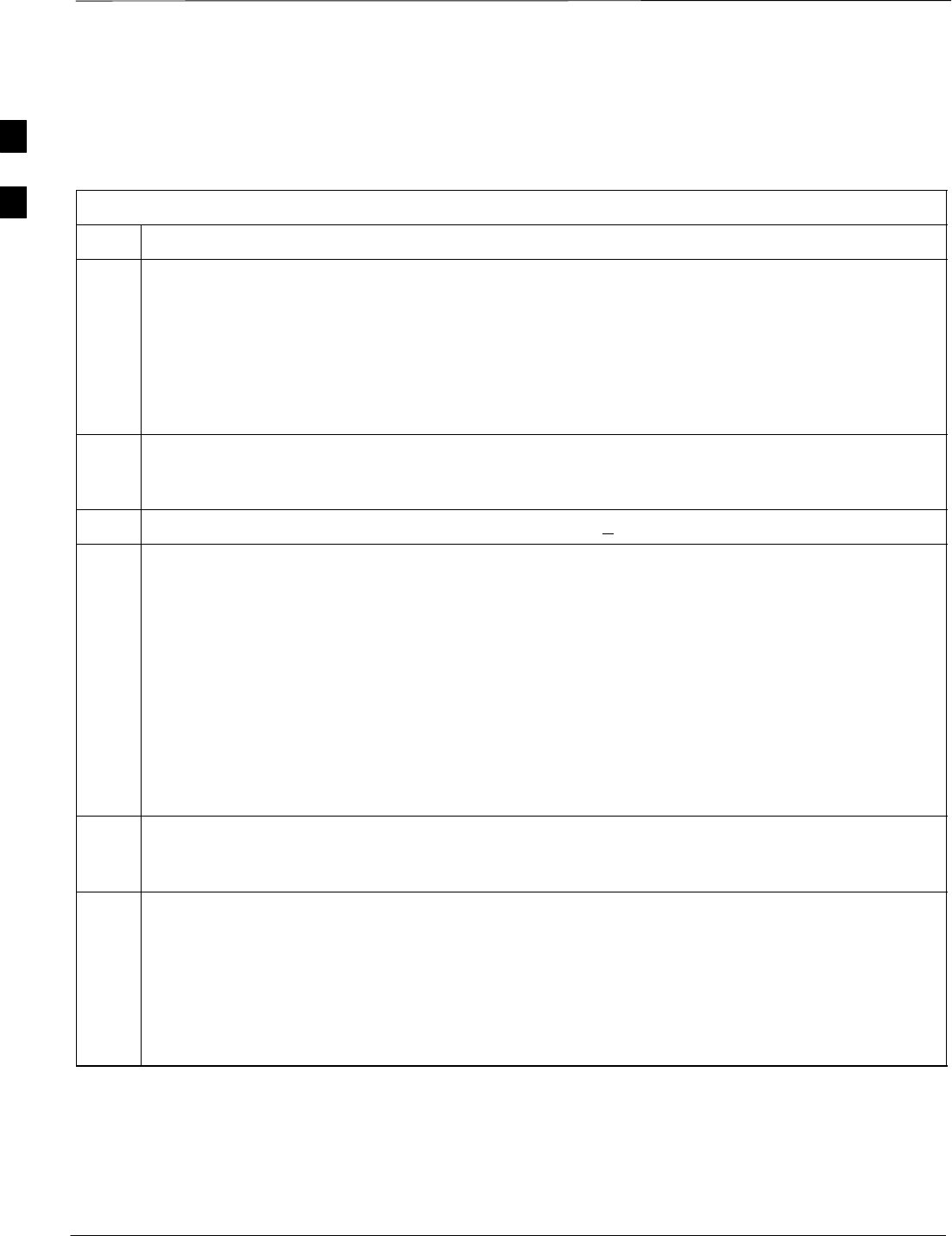User Manual

Initial Power Up – continued
SC4812ET BTS Optimization/ATP — CDMA LMF
Jan 2002
2-10
Battery Charge Test
(Connected Batteries)
Table 2-8 lists the step–by–step instructions for testing the batteries.
Table 2-8: Battery Charge Test (Connected Batteries)
Step Action
1 Close the battery compartment breakers for connected batteries ONLY. This process should be
completed quickly to avoid individual battery strings with excess charge current
NOTE
If the batteries are sufficiently discharged, the battery circuit breakers may not engage individually
due to the surge current. If this condition is observed, turn off the Meter Alarm Panel power switch,
and then engage all the connected battery circuit breakers, the Meter Alarm Panel power switch
should then be turned ON.
2 Using the DC current probe, measure the current in each of the battery string connections to the buss
bars in each battery cabinet. The charge current may initially be high but should quickly reduce in a
few minutes if the batteries have a typical new battery charge level.
3 The current in each string should be approximately equal (+ 5 A).
4 The bargraph meters on the rectifier modules can be used as a rough estimate of the total battery
charge current. Each rectifier module has eight LEDs to represent the output current. Each illuminated
LED indicates that approximately 12.5% (1/8 or 8.75 A) of the rectifier’s maximum (70 A) current is
flowing.
EXAMPLE:
Question: A system fitted with three rectifier modules each have three bargraph LEDs illuminated.
What is the total output current into the batteries?
Answer: Each bargraph is approximately indicating 12.5% of 70 A, therefore, 3 X 8.75A equals
26.25A. As there are three rectifiers, the total charge current is equal to (3 X 26.25 A) 78.75 A.
This charge current calculation only applies at this part of the start up procedure when the RF Cabinet
is not powered on, and the power cabinet heat exchanger is turned off.
5 Allow a few minutes to ensure that the battery charge current stabilizes before taking any further
action. Recheck the battery current in each string. If the batteries had a reasonable charge, the current
in each string should reduce to less than 5 A.
6 Recheck the DC output voltage. It should remain the same as measured in step 4 of the Power Up
Test.
NOTE
If discharged batteries are installed, all bargraphs may be illuminated on the rectifiers during the
charge test. This indicates that the rectifiers are at full capacity and are rapidly charging the batteries.
It is recommended in this case that the batteries are allowed to charge and stabilize as in the above
step before commissioning the site. This could take several hours.
Battery Discharge Test
Perform the test procedure in Table 2-9 only when the battery current is
less than 5 A per string. Refer to Table 2-8 for the procedures to check
current levels.
2










